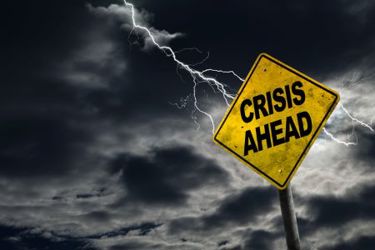5 Cities In The U.S. Just One Disaster Away From A Catastrophic Water Crisis


High-profile environmental and infrastructure crises around the country have raised concerns about just how close our drinking water and wastewater systems are to potential catastrophe.
“At the rate our climate is changing, America’s water infrastructure is not equipped to handle the challenges to come,” CNN reported. “To better understand the issue, CNN examined five cities or regions across the country that show signs of vulnerability under a rapidly warming planet.”
The news outlet listed Buffalo, New York; Prichard, Alabama; St. Louis, Missouri; Central Coast, California; and San Juan, Puerto Rico as all facing existential vulnerabilities that could leave drinking water or wastewater systems in total disrepair should climate-induced calamity strike. And these potential worst-case scenarios range from drinking water scarcity to stormwater inundation.
In Buffalo, for instance, catastrophe nearly struck last year as a blizzard wrought more than 50 inches of snow on the city. Total water system shutdown was only narrowly averted thanks to resilience planning by the local authority.
“The blizzard and seiche flooding threatened to knock out power to Buffalo’s water treatment plant, located precariously along Lake Erie,” according to CNN. “Thankfully, the plant has multiple backup sources, and the plant employees toughed out the storm, keeping the plant online and delivering clean water to residents.”
In Alabama, the drinking water is not under threat because of the scale of looming natural disaster, but because of increasing vulnerability caused by years of underinvestment and neglect.
“The problems we are seeing in Prichard are similar to the issues we see plaguing communities around the country,” Catherine Coleman Flowers, an environmental justice advocate, told CNN. “Failing water and sanitation infrastructure that hasn’t been repaired in decades due to lack of funding and discriminatory distribution of public funds have led to issues that can spread diseases and threaten public health.”
Even though the problems identified by CNN are drastic and extend to many other systems around the country and world, a positive may be in the fact that as these issues are highlighted, officials can take action to ensure our drinking water and wastewater systems survive the next environmental disaster.
For instance, St. Louis was identified for fundamental problems that are all too common in other parts of the country: aging infrastructure that largely consists of lead pipes. But officials there are aware of that vulnerability and working to shore it up.
“This is something Susan Armstrong with the Missouri Safe Drinking Water Commission is keeping an eye on,” per KSDK. “The city is taking inventory of all the lead service lines in the city and hopes to be finished with it by the end of next year.”
Hopefully, every other city around the country facing drinking water and wastewater issues is preparing to address them before disaster strikes.
To read more about how water and wastewater systems prepare for disaster, visit Water Online’s Resiliency Solutions Center.
